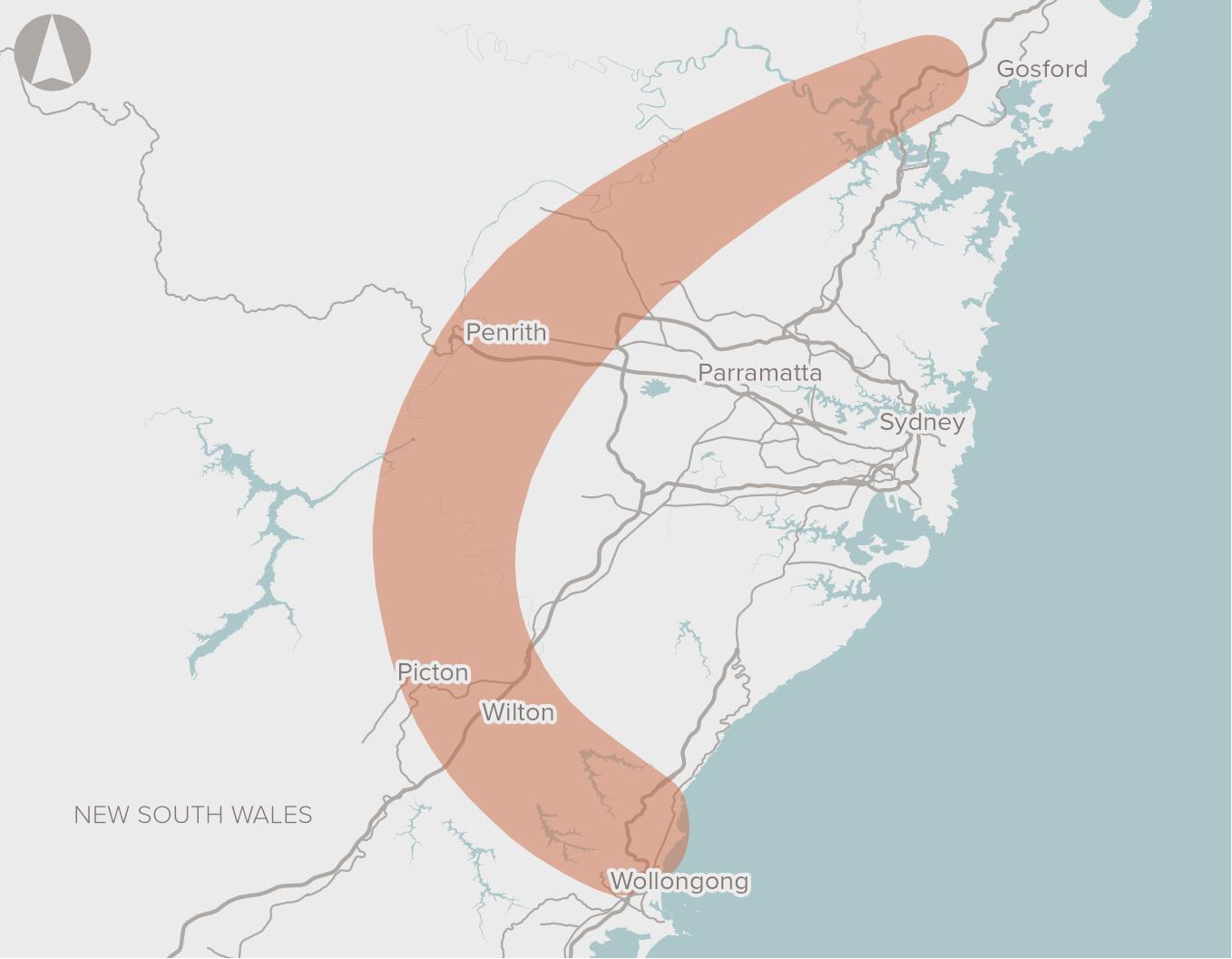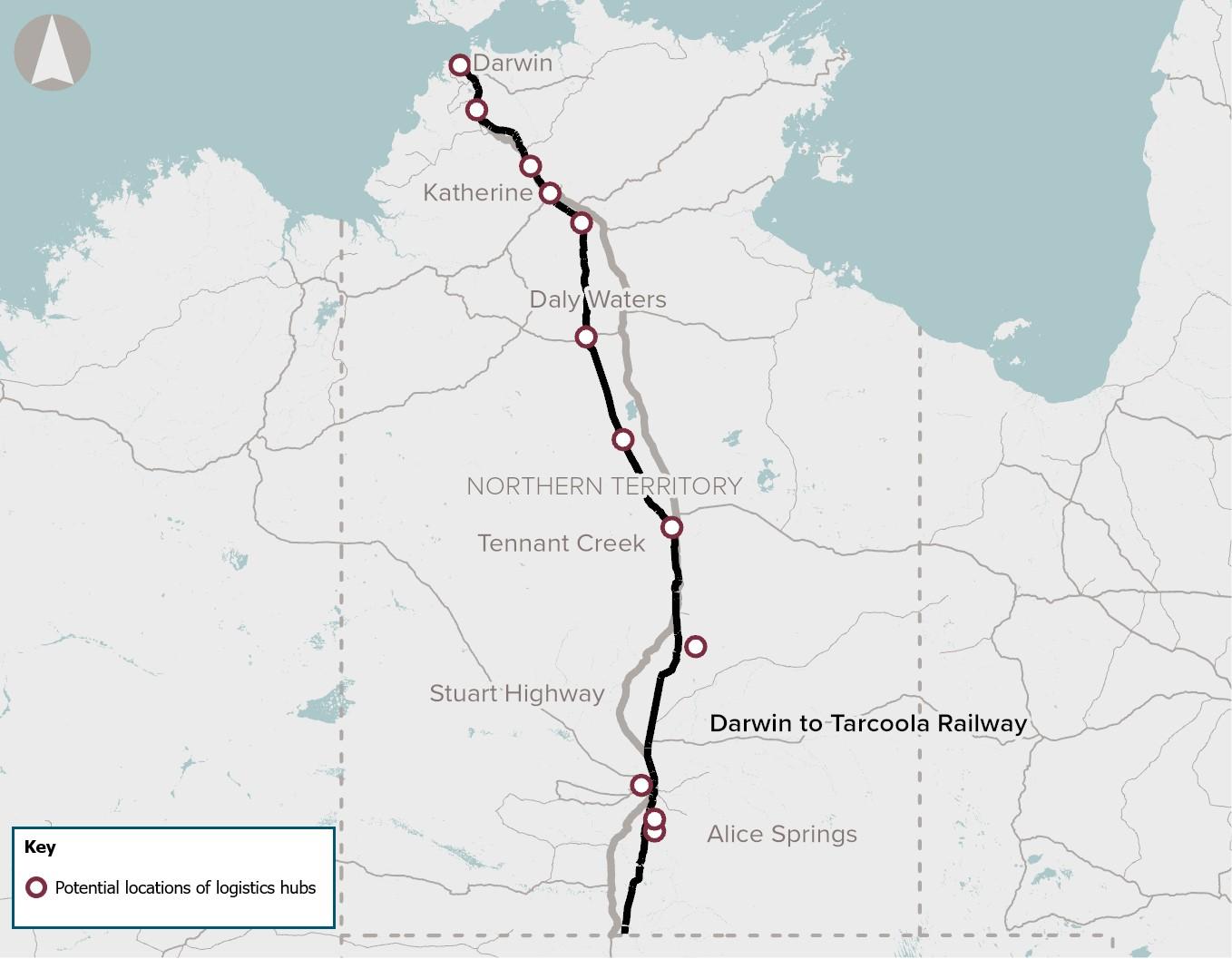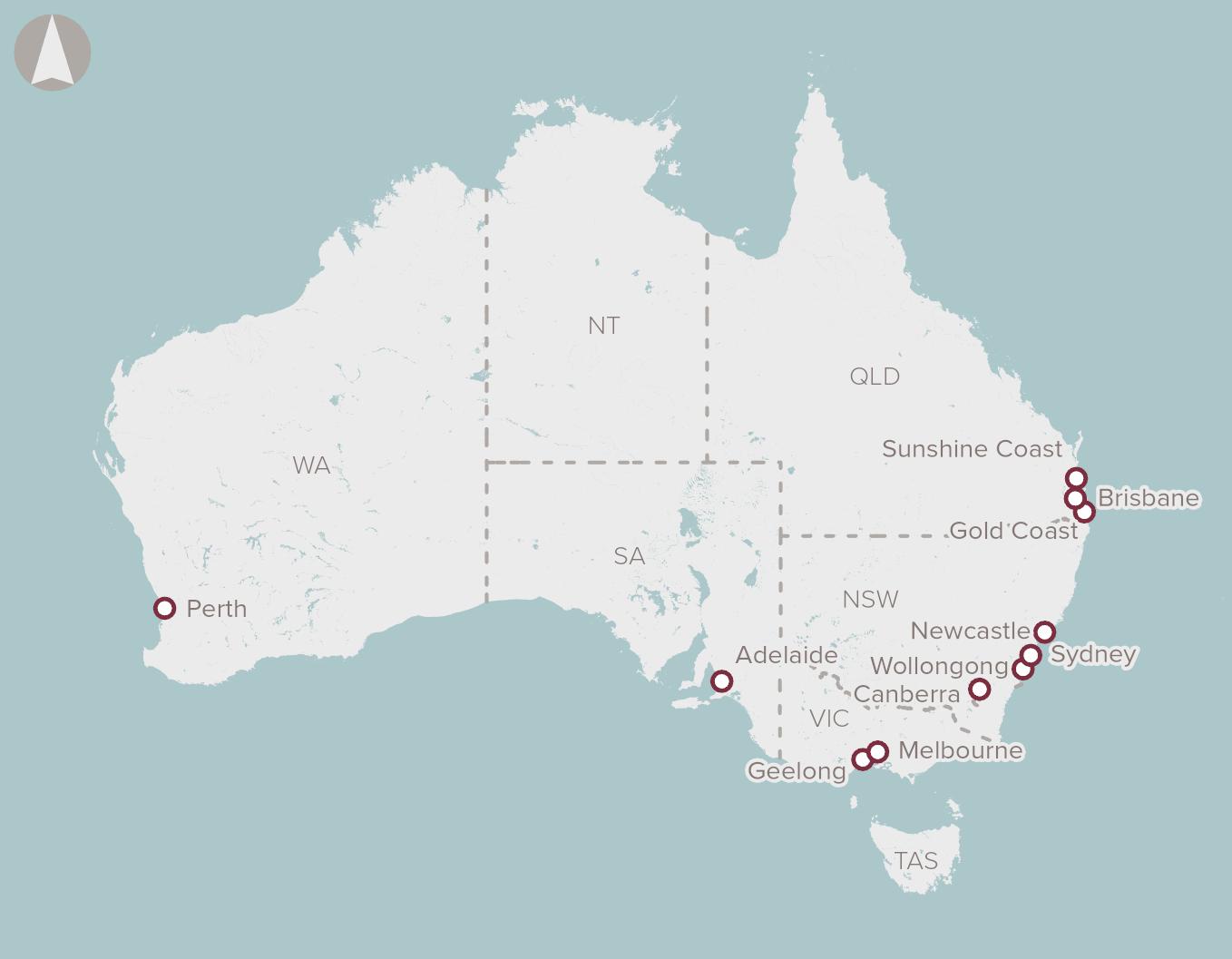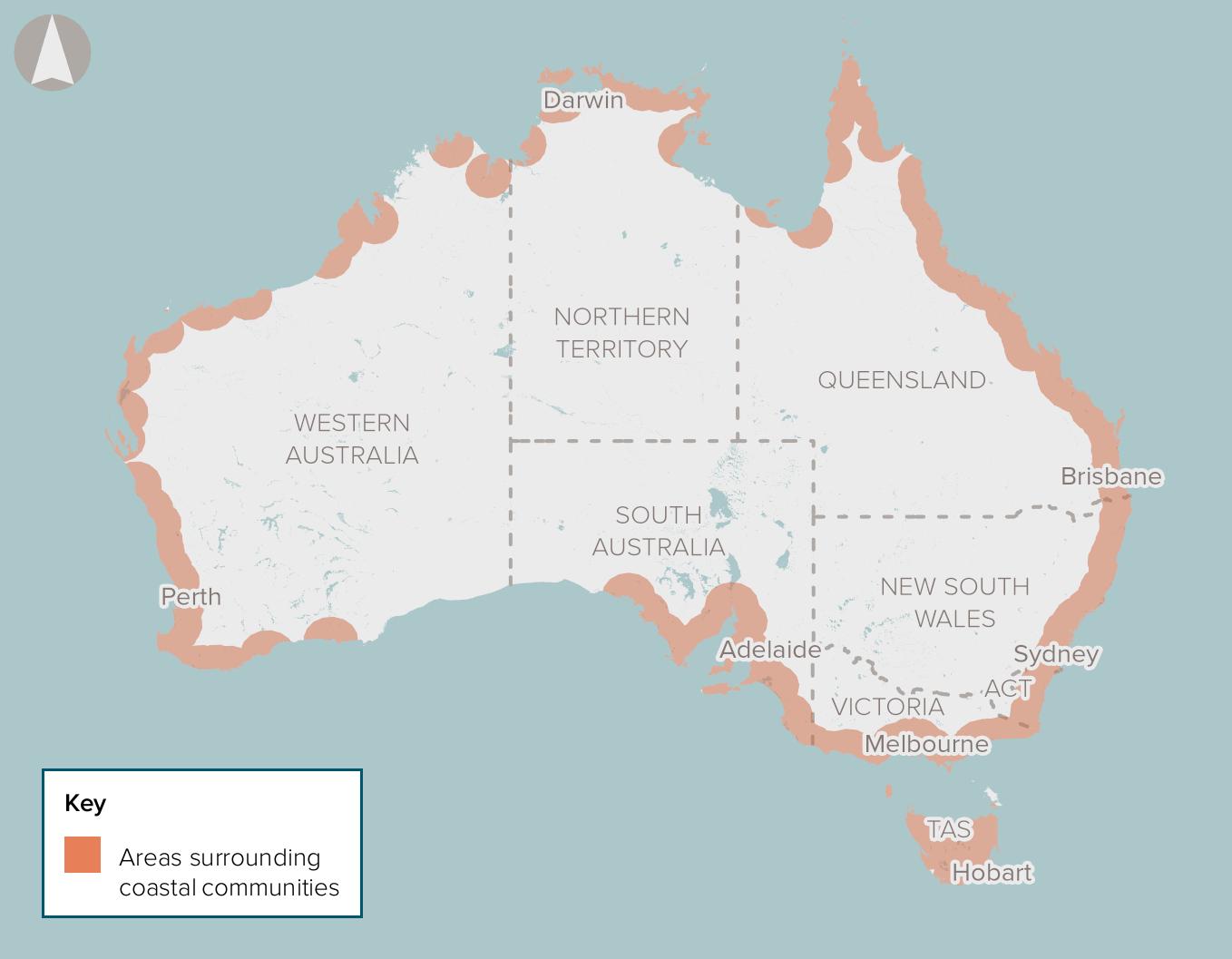Chart Color Schemes
est. as @ -- *
ABS ERP | -- people | --
2021 Census | -- people
Sales Activity
Curious about local property values? Filter the chart to assess the volume and appreciation (including resales) trends and regional comparisons, or scroll to the map below view this information at an individual property level.
Find a Recent Sale
Sales Detail
Population
Gray is positioned among the lower quartile of areas assessed nationally for population growth based on AreaSearch's assessment of recent, and medium term trends
Based on AreaSearch's analysis, Gray's population was around 3,387 as of August 2025. This reflected an increase of 245 people, representing a growth of 7.8% since the 2021 Census which reported a population of 3,142 people. The change was inferred from the estimated resident population of 3,387 from the ABS as of June 2024 and address validation since the Census date. This level of population equated to a density ratio of 2,258 persons per square kilometer, which was above the average seen across national locations assessed by AreaSearch. Gray's growth of 7.8% since census positioned it within 0.8 percentage points of the national average of 8.6%, indicating competitive growth fundamentals. Overseas migration contributed approximately 50.4% of overall population gains during recent periods, driving primary population growth for the area.
AreaSearch adopted ABS/Geoscience Australia projections for each SA2 area, released in 2024 with a base year of 2022. For areas not covered by this data and to estimate growth post-2032, AreaSearch applied growth rates by age cohort to each area, as provided by the ABS in its latest Greater Capital Region projections released in 2023 based on 2022 data. Looking ahead, an above median population growth is projected for statistical areas across the nation, with Gray expected to expand by 687 persons to 2041 based on the latest population numbers, representing a total increase of 20.3% over the 17-year period.
Frequently Asked Questions - Population
Development
The level of residential development activity in Gray is very low in comparison to the average area assessed nationally by AreaSearch
Gray has experienced approximately zero dwellings receiving development approval annually. Development approval data is produced by the Australian Bureau of Statistics on a financial year basis, with two homes approved over the past five financial years between FY20 and FY25, and zero so far in FY26. The area has experienced population decline, suggesting that new supply has likely been keeping up with demand, offering good choice to buyers.
There have also been $2.7 million in commercial approvals this financial year, indicating limited commercial development focus. When compared to Greater Darwin, Gray shows substantially reduced construction levels. This constrained new construction typically reinforces demand and pricing for existing dwellings. This level is similarly under the national average, indicating the area's established nature and suggesting potential planning limitations.
Frequently Asked Questions - Development
Infrastructure
Gray has limited levels of nearby infrastructure activity, ranking in the 2ndth percentile nationally
No changes can significantly affect a region's performance like alterations to local infrastructure, major projects, and planning initiatives. AreaSearch has identified zero projects that are predicted to impact this area. Notable projects include Hudson Creek Power Station, Marine Industry Park, Darwin Corporate Park, Royal Darwin Hospital (RDH) Mental Health Inpatient Unit and CSSD upgrades. The following list provides details on those most likely to be relevant.
Professional plan users can use the search below to filter and access additional projects.
INFRASTRUCTURE SEARCH
Frequently Asked Questions - Infrastructure
Royal Darwin Hospital (RDH) Mental Health Inpatient Unit and CSSD upgrades
Three-storey mental health facility on the RDH campus delivering 24 beds (18 inpatient + 6-bed Stabilisation Assessment and Referral Area) connected to the Emergency Department by an enclosed elevated walkway, plus upgrades to the Central Services Sterilisation Department. Managing Contractor: Sitzler. Architects: Ashford Architects (now Ashford Lamaya). Construction commenced 2023 and is tracking toward completion in 2025.

John Stokes Square Redevelopment
The Nightcliff area in Northern Territory is undergoing redevelopment, with works in the John Stokes Square already underway. The redevelopment will feature a 24 Hour Police Station, specifically designed public housing including for seniors and people living with disabilities, a pedestrian-friendly link between the Nightcliff Village and Nightcliff Shopping Centre, open space and the expansion of local services. The construction of these important amenities will create more than 250 local jobs over the lifetime of the project.
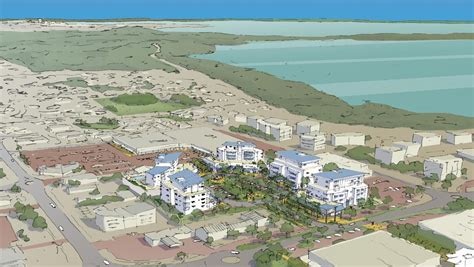
Enabling Digital Health Services for Regional and Remote Australia
National initiative to expand and improve digital health access for people in regional and remote Australia. Focus areas include enabling telehealth and virtual care, upgrading clinical systems and connectivity, supporting secure information exchange, and building workforce capability in digital health, aligned with the Australian Government's Digital Health Blueprint and Action Plan 2023-2033.
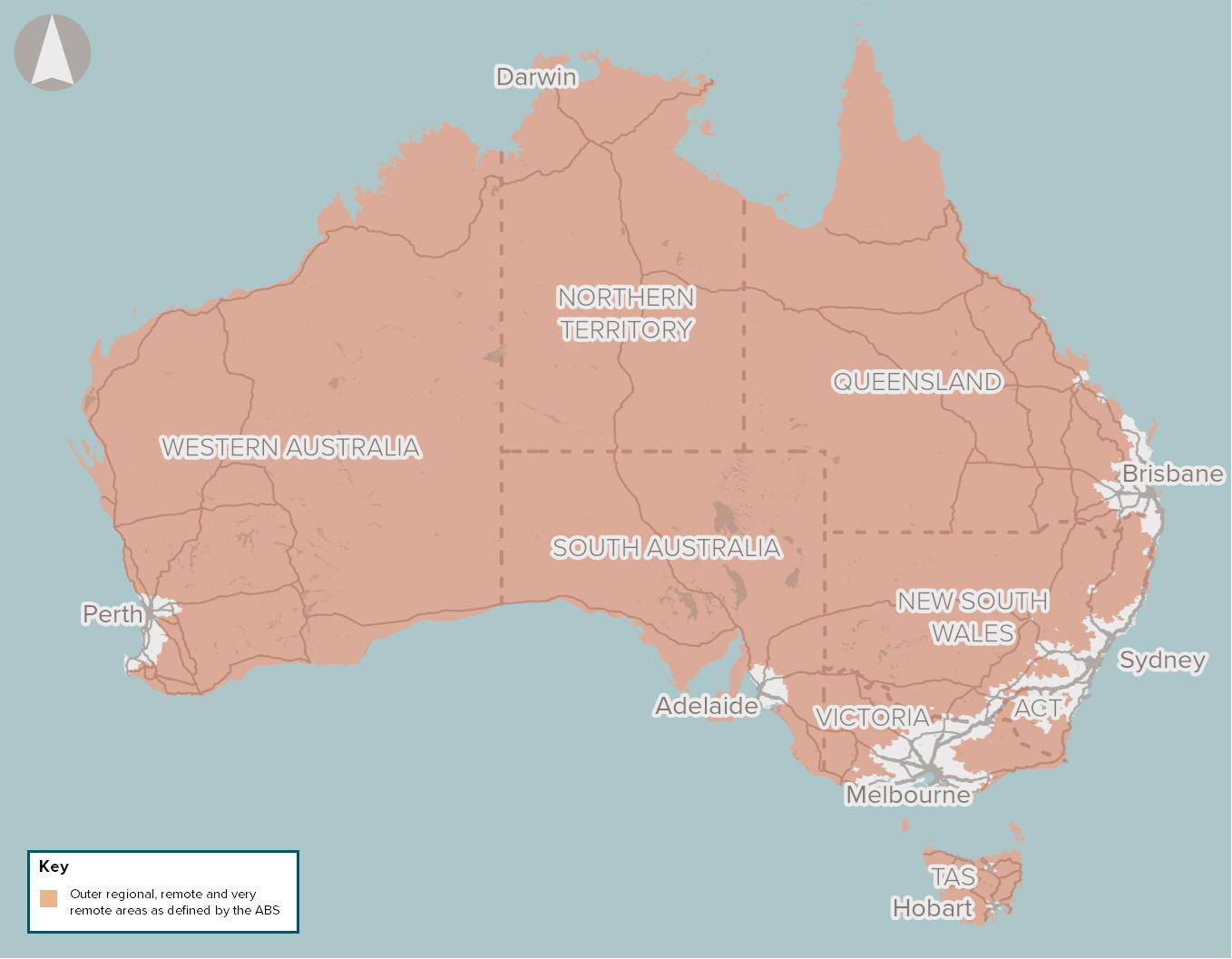
Desert Springs Octopus Renewable Energy Program
Majority Indigenous-owned developer pursuing a near-term pipeline of grid-connected solar and battery projects along the Darwin-Katherine Electricity System, with potential to expand into wind and green hydrogen. Partnership includes Octopus Australia with Larrakia Nation and Jawoyn Association to deliver utility-scale renewable energy and community benefit sharing.

National EV Charging Network (Highway Fast Charging)
Partnership between the Australian Government and NRMA to deliver a backbone EV fast charging network on national highways. Program funds and co-funds 117 DC fast charging sites at roughly 150 km intervals to connect all capital cities and regional routes, reducing range anxiety and supporting EV uptake.
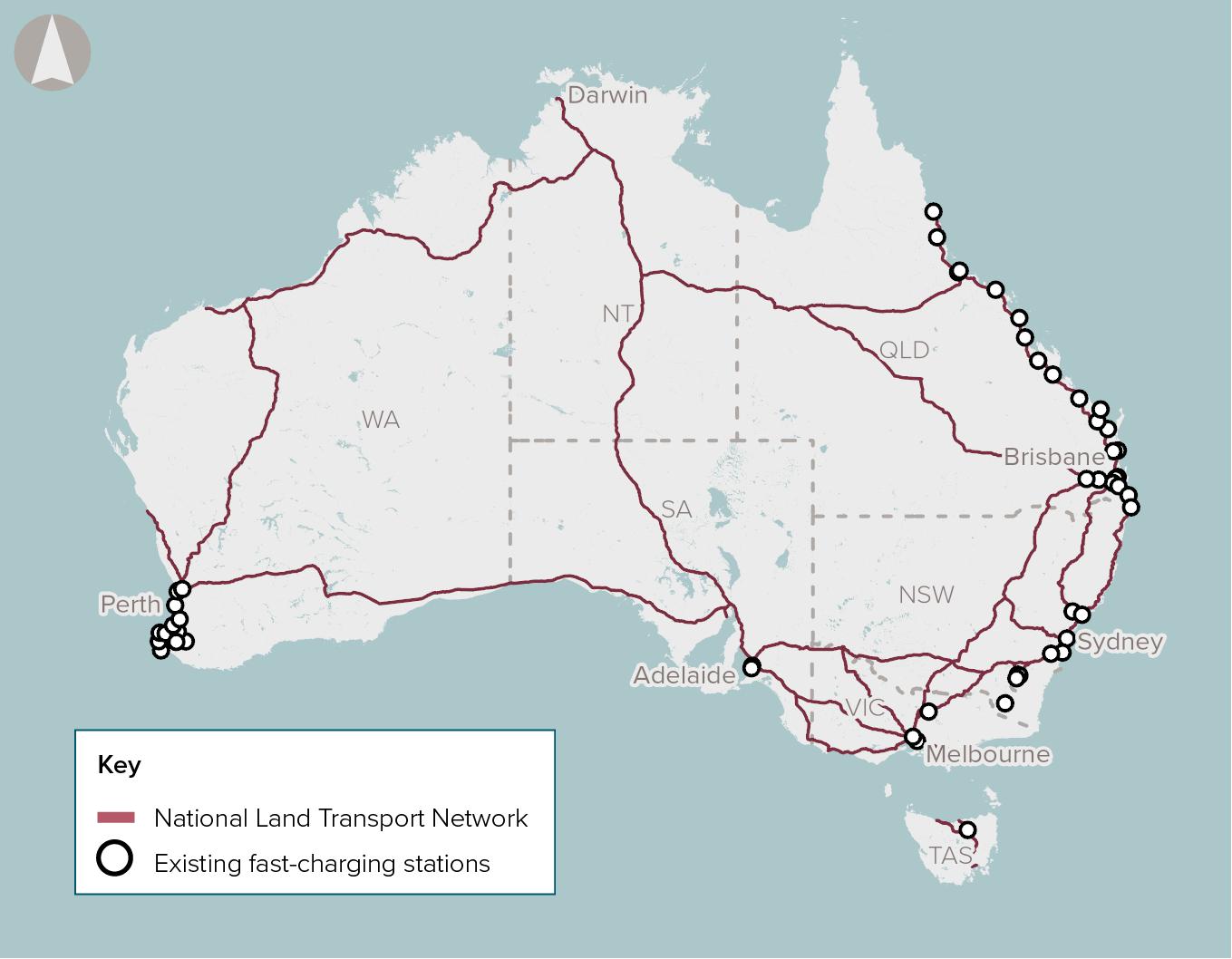
Hudson Creek Power Station
12MW natural gas-fired power plant, NT's first privately owned grid-connected gas generation facility. Features 25% lower emissions than average NT gas generators. Part of dual project with Batchelor Solar Farm, creating 162 construction jobs and providing vital grid stability to Darwin-Katherine network.
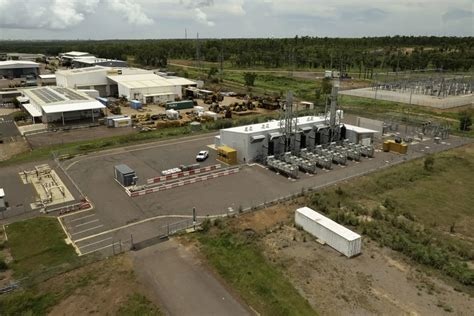
Marine Industry Park
Marine and offshore industries servicing hub at East Arm, Darwin. Stage 1 planning approval is secured for a purpose-built industrial subdivision near the new Darwin Ship Lift, with expressions of interest open for serviced lots. Existing common-user facilities include an all-tide barge ramp (first point of entry) and a secure hardstand supporting storage and fabrication activities.
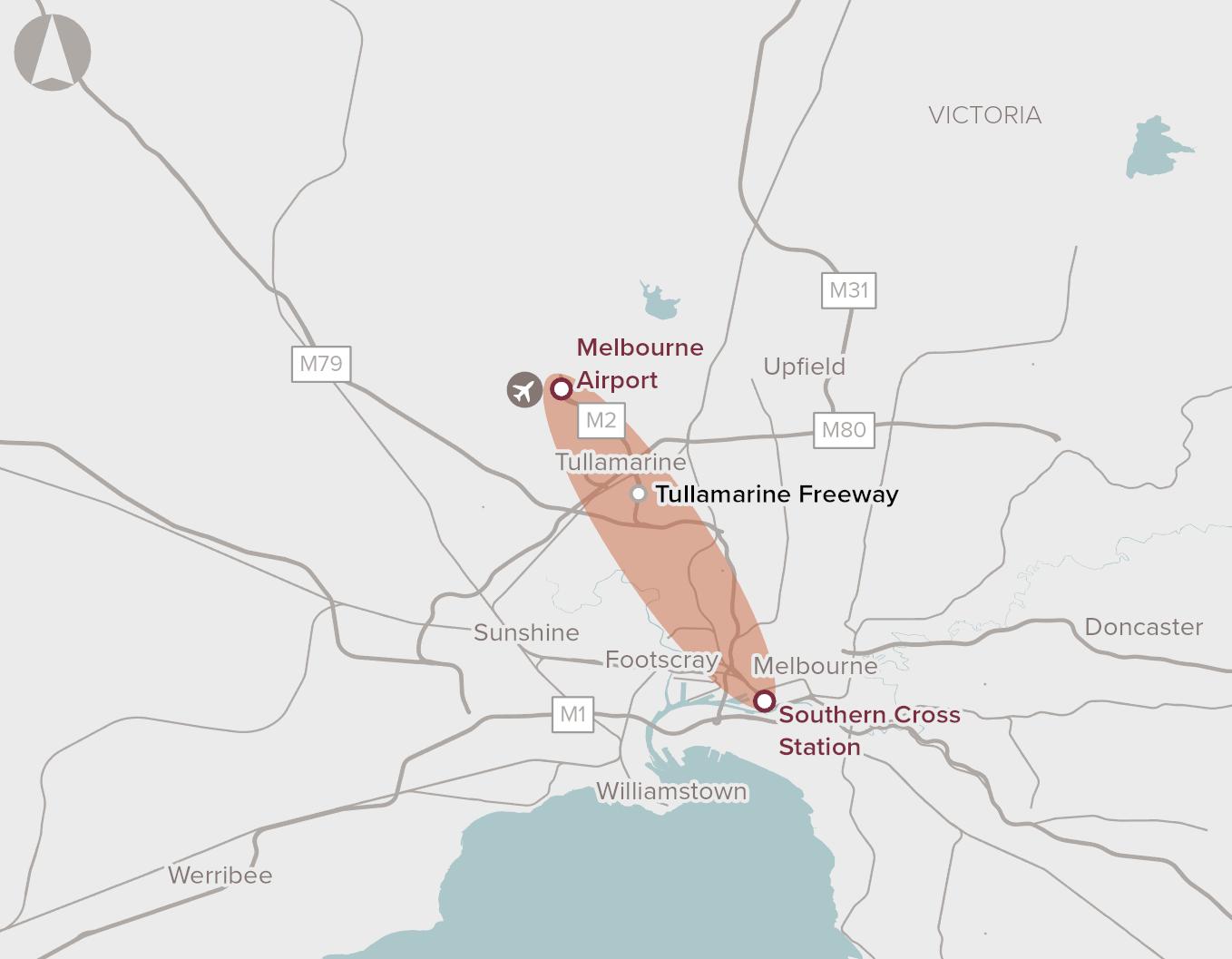
Darwin Renewable Energy Hub
Northern Territory Government proposal to co-locate up to six utility-scale solar farms (total 180-210 MW) with a battery energy storage system on 940 ha of Crown Land west of Finn Road, feeding the Darwin-Katherine grid. Site identified for industry in regional land use plans; consultation held to February 28, 2025 and environmental assessment processes are underway.

Employment
The labour market performance in Gray lags significantly behind most other regions nationally
Gray has a balanced workforce with both white and blue collar jobs, well-represented essential services sectors, an unemployment rate of 12.1%, and estimated employment growth of 2.7% over the past year as of June 2025. In this month, 1,660 residents were employed while the unemployment rate was 9.0% higher than Greater Darwin's rate of 3.0%.
Workforce participation was significantly lower at 60.1%, compared to Greater Darwin's 69.7%. The key industries for employment among Gray's residents are public administration & safety, health care & social assistance, and retail trade. Retail trade is particularly notable with employment levels at 1.4 times the regional average. However, public administration & safety is under-represented, with only 15.7% of Gray's workforce compared to 19.5% in Greater Darwin.
The area appears to offer limited local employment opportunities, as indicated by the count of Census working population vs resident population. Over the 12 months to June 2025, employment increased by 2.7%, while labour force increased by 2.9%, resulting in a slight rise in unemployment by 0.2 percentage points. In contrast, Greater Darwin saw employment grow by 2.9% and unemployment fall marginally during the same period. State-level data to Sep-25 shows NT employment grew by 1.0% year-on-year, adding 1,710 jobs, with the state unemployment rate at 4.2%. This compares favourably to the national unemployment rate of 4.5%, with the state's employment growth outpacing the national average of 0.26%. Jobs and Skills Australia's national employment forecasts from May 2025 project national employment expansion by 6.6% over five years and 13.7% over ten years. Applying these projections to Gray's employment mix suggests local growth of approximately 6.0%% over five years and 12.6% over ten years, though this is a simplified weighting extrapolation for illustrative purposes and does not account for localised population projections.
Frequently Asked Questions - Employment
Income
The economic profile demonstrates above-average performance, with income metrics exceeding national benchmarks based on AreaSearch comparative assessment
Income in Gray is $60,378 median and $66,723 average during financial year 2022. This contrasts with Greater Darwin's $65,522 median and $75,260 average for the same period. By March 2025, estimated incomes adjust to approximately $66,681 median and $73,689 average based on a 10.44% Wage Price Index growth since financial year 2022. Census data shows personal income at the 64th percentile ($877 weekly) and household income at the 35th percentile. The income bracket of $1,500 - 2,999 dominates with 33.8% of residents (1,144 people). Housing affordability pressures are severe, with only 79.9% of income remaining, ranking at the 29th percentile.
Frequently Asked Questions - Income
Housing
Gray displays a diverse mix of dwelling types, with above-average rates of outright home ownership
Gray's dwelling structure, as per the latest Census, consisted of 59.8% houses and 40.2% other dwellings (semi-detached, apartments, 'other' dwellings), compared to Darwin metro's 79.1% houses and 20.9% other dwellings. Home ownership in Gray stood at 12.4%, with mortgaged dwellings at 35.6% and rented ones at 52.0%. The median monthly mortgage repayment was $1,725, below Darwin metro's average of $2,037. Median weekly rent in Gray was $300, compared to Darwin metro's $400. Nationally, Gray's mortgage repayments were lower than the Australian average of $1,863, and rents were substantially below the national figure of $375.
Frequently Asked Questions - Housing
Household Composition
Gray features high concentrations of lone person households and group households, with a lower-than-average median household size
Family households account for 63.6% of all households, including 23.4% couples with children, 18.5% couples without children, and 19.9% single parent families. Non-family households make up the remaining 36.4%, consisting of 32.5% lone person households and 4.3% group households. The median household size is 2.4 people, which is smaller than the Greater Darwin average of 2.8.
Frequently Asked Questions - Households
Local Schools & Education
Educational outcomes in Gray fall within the lower quartile nationally, indicating opportunities for improvement in qualification attainment
The area's university qualification rate is 17.5%, significantly lower than the SA4 region average of 31.3%. This disparity presents both a challenge and an opportunity for targeted educational initiatives. Bachelor degrees are the most common at 11.4%, followed by postgraduate qualifications (3.5%) and graduate diplomas (2.6%). Vocational credentials are prevalent, with 44.4% of residents aged 15+ holding such qualifications - advanced diplomas (11.4%) and certificates (33.0%).
Educational participation is high, at 38.1%, including 14.8% in primary education, 10.2% in secondary education, and 4.8% pursuing tertiary education. Gray Primary School and Good Shepherd Lutheran College - Palmerston Campus serve a total of 263 students, with both schools focusing exclusively on primary education. Secondary options are available in nearby areas. The school places per 100 residents (7.8) fall below the regional average (14.7), indicating that some students may attend schools outside the area.
Frequently Asked Questions - Education
Schools Detail
Nearby Services & Amenities
Transport
Transport servicing is good compared to other areas nationally based on assessment of service frequency, route connectivity and accessibility
Transport analysis indicates 13 active stops operating within Gray, offering a mix of bus services. These stops are served by 23 individual routes, collectively facilitating 1,422 weekly passenger trips. Transport accessibility is rated excellent, with residents typically located 163 meters from the nearest stop.
Service frequency averages 203 trips per day across all routes, equating to approximately 109 weekly trips per stop.
Frequently Asked Questions - Transport
Transport Stops Detail
Health
The level of general health in Gray is notably higher than the national average with prevalence of common health conditions low among the general population though higher than the nation's average across older, at risk cohorts
Gray demonstrates above-average health outcomes with prevalence of common health conditions low among the general population but higher than the national average across older, at-risk cohorts. The rate of private health cover is approximately 52% of the total population (~1,774 people), slightly leading that of the average SA2 area and comparing to 56.4% across Greater Darwin.
The most common medical conditions in the area are asthma and arthritis, impacting 7.6 and 6.7% of residents respectively, while 72.5% declare themselves completely clear of medical ailments compared to 76.6% across Greater Darwin. The area has 10.6% of residents aged 65 and over (357 people), which is higher than the 7.5% in Greater Darwin. Health outcomes among seniors present some challenges, requiring more attention than the broader population.
Frequently Asked Questions - Health
Cultural Diversity
Gray was found to be more culturally diverse than the vast majority of local markets in Australia, upon assessment of a range of language and cultural background related metrics
Gray was found to be more culturally diverse than most local markets, with 24.1% of its population born overseas and 19.9% speaking a language other than English at home. The dominant religion in Gray is Christianity, comprising 40.6% of the population. Buddhism is notably overrepresented, making up 3.3% compared to the Greater Darwin average of 2.3%.
In terms of ancestry, the top three groups are Australian (22.9%), English (22.0%), and Australian Aboriginal (14.9%), which is higher than the regional average of 9.1%. There are also notable differences in the representation of certain ethnic groups: Filipino at 4.4% compared to the regional average of 4.8%, Vietnamese at 1.0% versus 0.7%, and Maori at 0.6% compared to 0.7%.
Frequently Asked Questions - Diversity
Age
Gray hosts a young demographic, positioning it in the bottom quartile nationwide
Gray's median age is 34 years, matching Greater Darwin's average of 34 but lower than Australia's median of 38. Compared to Greater Darwin, Gray has a higher percentage of residents aged 55-64 (12.3%) but fewer residents aged 25-34 (14.2%). Between 2021 and the present, the percentage of residents aged 55-64 has increased from 11.5% to 12.3%, while the percentage of residents aged 5-14 has decreased from 15.7% to 14.4%. By 2041, demographic modeling indicates that Gray's age profile will change significantly. The 45-54 age cohort is projected to grow steadily, increasing by 134 people (27%) from 496 to 631.

